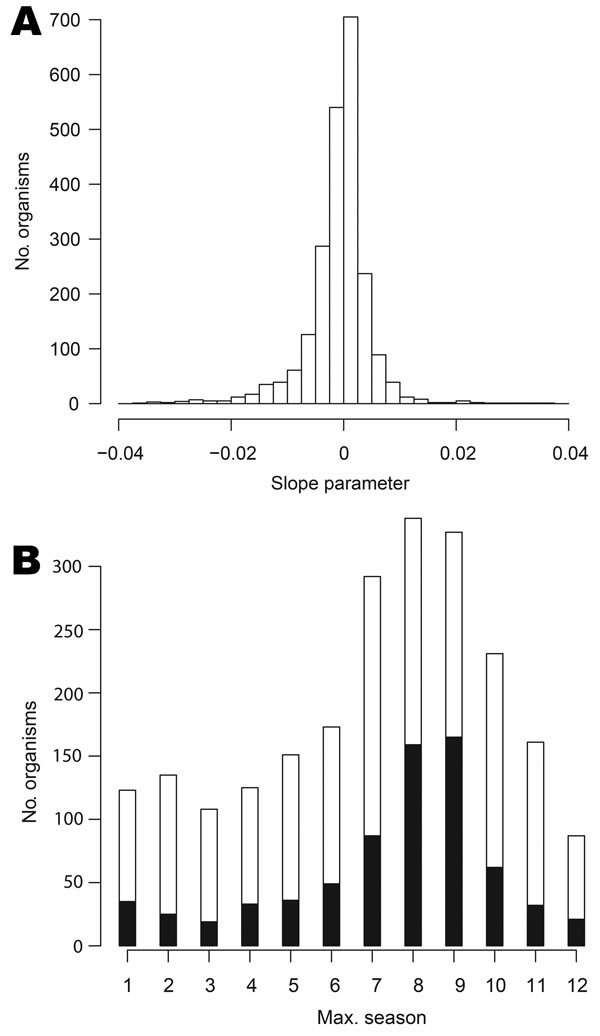Volume 19, Number 1—January 2013
Research
Automated Biosurveillance Data from England and Wales, 1991–2011
Figure 4

Figure 4. . A) Distribution of estimated linear trend parameters (units: per week) for data on 2,250 organisms (excluding 4 organisms with extreme slopes), England and Wales, 1991–2011. B) Stacked bar chart of modal seasonal period for 2,254 organisms. The black bar sections represent organisms for which the seasonal effect is statistically significant.
Page created: December 20, 2012
Page updated: December 20, 2012
Page reviewed: December 20, 2012
The conclusions, findings, and opinions expressed by authors contributing to this journal do not necessarily reflect the official position of the U.S. Department of Health and Human Services, the Public Health Service, the Centers for Disease Control and Prevention, or the authors' affiliated institutions. Use of trade names is for identification only and does not imply endorsement by any of the groups named above.